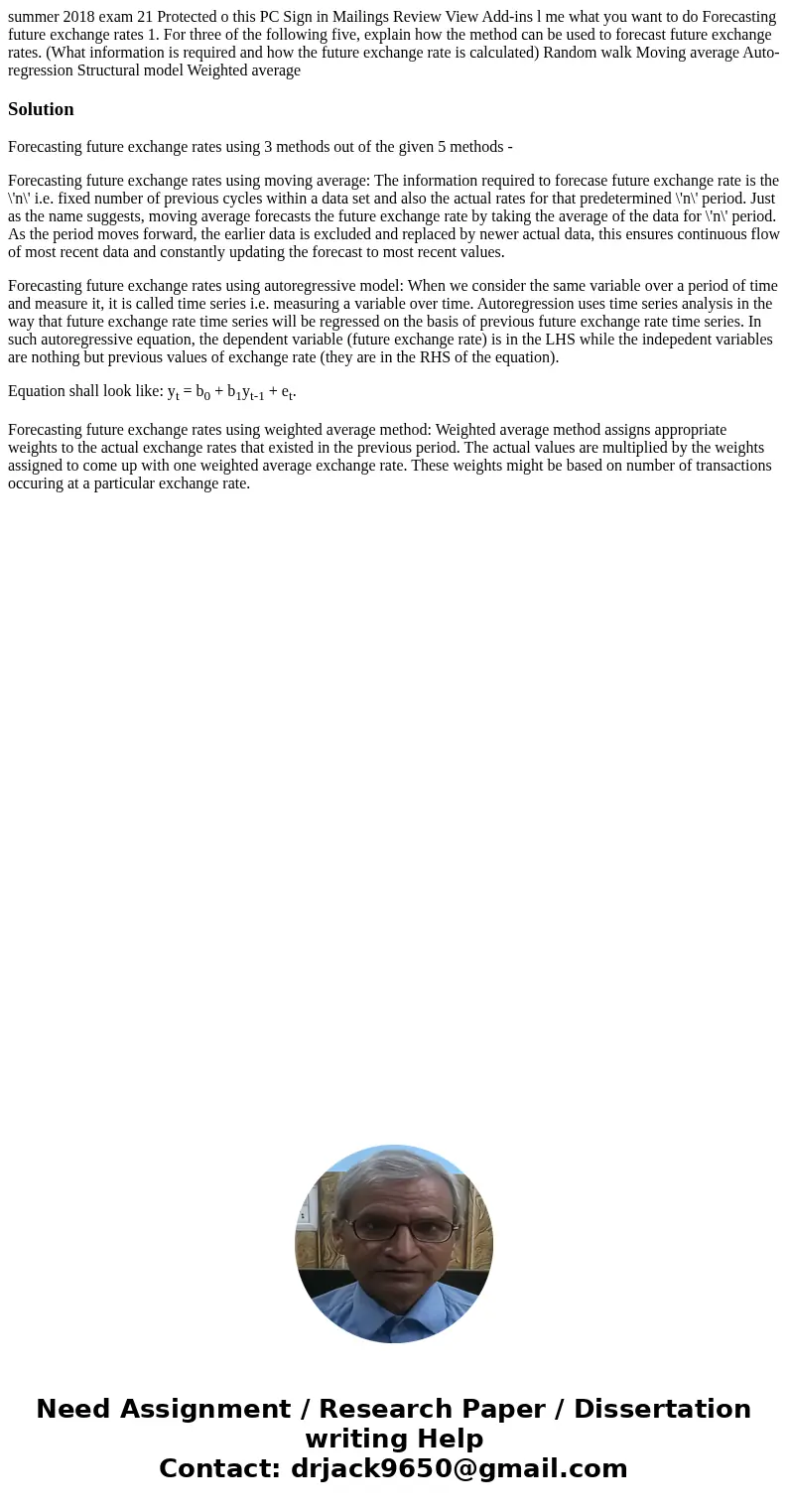summer 2018 exam 21 Protected o this PC Sign in Mailings Rev
Solution
Forecasting future exchange rates using 3 methods out of the given 5 methods -
Forecasting future exchange rates using moving average: The information required to forecase future exchange rate is the \'n\' i.e. fixed number of previous cycles within a data set and also the actual rates for that predetermined \'n\' period. Just as the name suggests, moving average forecasts the future exchange rate by taking the average of the data for \'n\' period. As the period moves forward, the earlier data is excluded and replaced by newer actual data, this ensures continuous flow of most recent data and constantly updating the forecast to most recent values.
Forecasting future exchange rates using autoregressive model: When we consider the same variable over a period of time and measure it, it is called time series i.e. measuring a variable over time. Autoregression uses time series analysis in the way that future exchange rate time series will be regressed on the basis of previous future exchange rate time series. In such autoregressive equation, the dependent variable (future exchange rate) is in the LHS while the indepedent variables are nothing but previous values of exchange rate (they are in the RHS of the equation).
Equation shall look like: yt = b0 + b1yt-1 + et.
Forecasting future exchange rates using weighted average method: Weighted average method assigns appropriate weights to the actual exchange rates that existed in the previous period. The actual values are multiplied by the weights assigned to come up with one weighted average exchange rate. These weights might be based on number of transactions occuring at a particular exchange rate.

 Homework Sourse
Homework Sourse